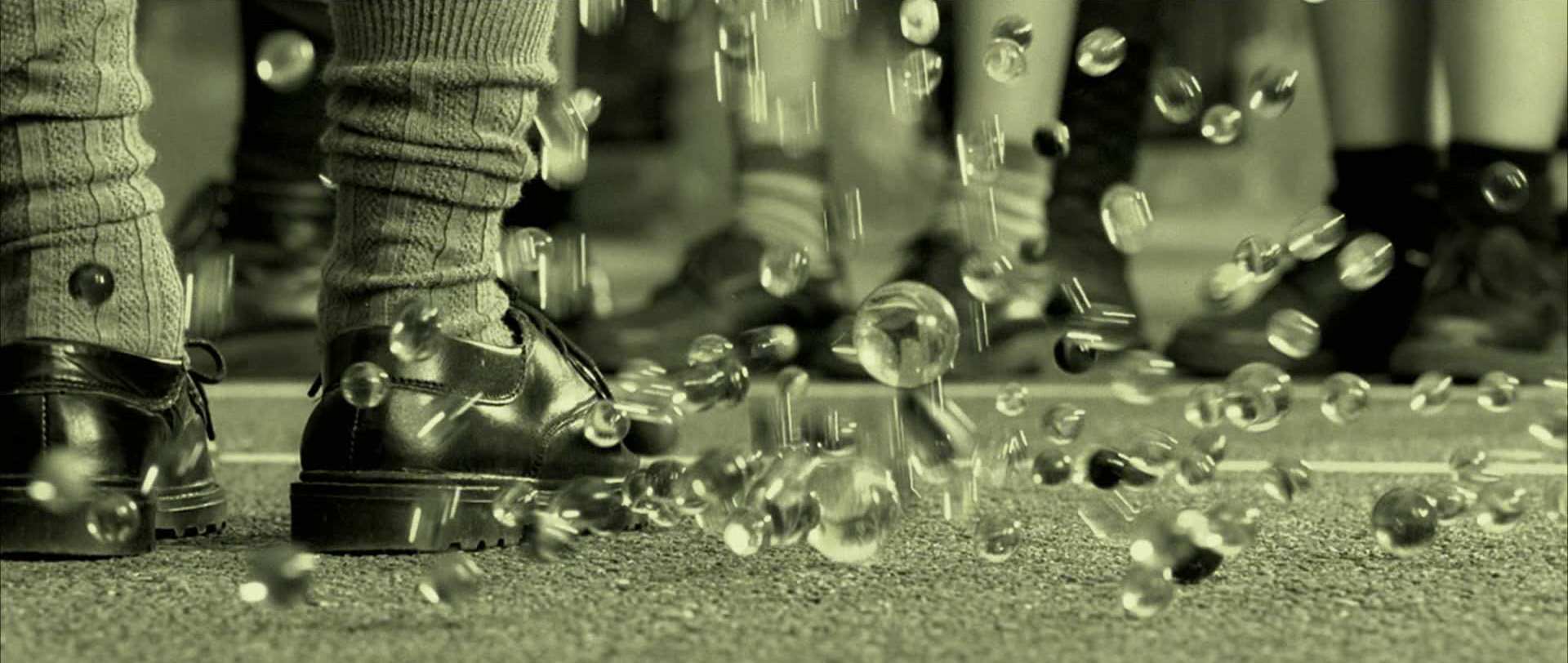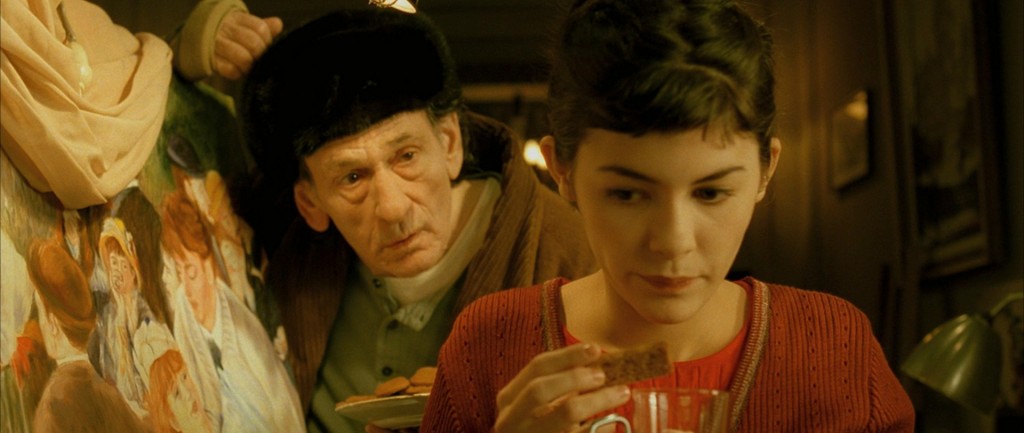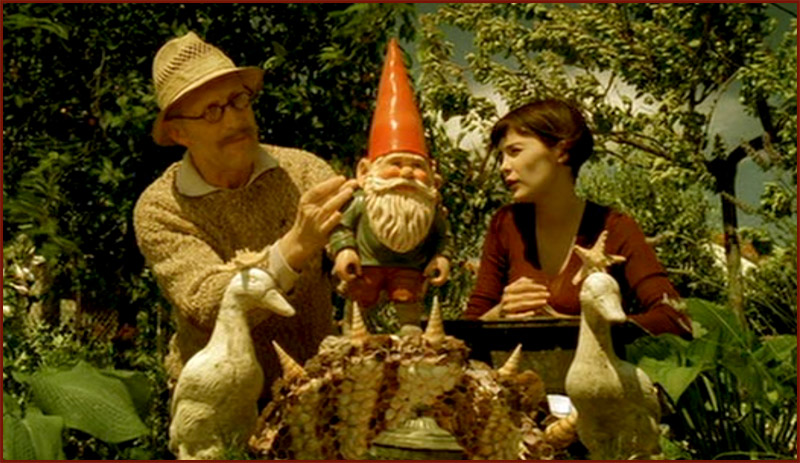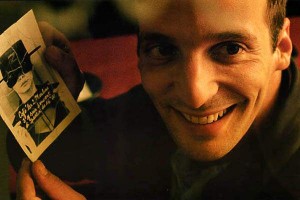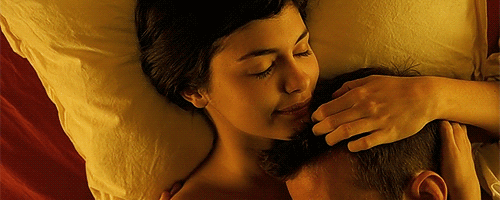At some point during our childhoods, most of us have felt the lure of magic. We see witches and warlocks in our books, movies and television shows, and although we usually harbor some healthy doubt about it all, magic still just seems so possible. I’ve come to understand that this is quite important for our development, and that it nurtures a needed respect for natural forces. We need reminders of the power and cunning of both ourselves and nature. It boosts our willingness to try things, to reflect on our ability to impact others and the world, and to simply enjoy the power of autonomy. Halloween can be an excellent excuse for seeking out such reminders and basking in that playful spookiness. In keeping with that, let’s take a fun yet serious look at the ’90s cult classic “The Craft.”
Last autumn, I got together with a few friends to re-watch the film for the first time since I was a teen. I was fully prepared to giggle at myself a little for being so very taken by the story. Instead, I was thrilled to find a wealth of metaphors and important feminist life lessons within. I became aware of my incredible luck at being thirteen when the film came out, and how applicable it all still is. So I’ve written up for you what I see as the curriculum of the School of The Craft and its psychotherapeutic components. Not only are these lessons still relevant, many of them are vital to our movement forward out of our current collective psychic crisis. And have you noticed the increase in interest in natural magic? Magic leans heavily on forces that we have largely lost track of as a respected part of culture: intuition, instinct, benevolence, symbolism, and reverence for the earth. “Female” things that we hoped we stamped out, because they were considered dangerous. And they can be.
The Craft tugs at our innate knowing that the feminine is extraordinarily powerful. On their way to perform a ritual, the girls’ bus driver warns them to watch out for weirdos. Their iconic, perfect-for-the-trailer response is, “We are the weirdos, mister.” Though it comes from Nancy who is drunk with power, it speaks to us all the same. One of the damaging effects of patriarchy is the loss of awareness that the feminine is powerful enough to be dangerous if embodied accordingly. I remember well what I felt when I first saw that scene; it was an experience of empowered relief. The assumption that young women are inherently at risk for harm was not only rejected, it was met with a playful threat. My little thirteen-year-old self felt seen and respected and excited.
The Craft is most certainly about witchcraft and a higher understanding of nature, but I invite you to think of it as a guide to autonomy, especially that of anyone who’s experienced standard female socialization. And while I’ll be speaking to the metaphorical components often, let’s take a moment to look at the literal meaning of the term craft. To craft is to create with intention. It is to work at something, refining it over time. It’s a very active term, one that conjures an image of a person and their work before them. And all of the lessons within this film have to do with being active and aware while engaged in a process. I highlight this, because that is also the nature of therapy; it’s the maintaining of free will. We’re sure struggling right now with what that means. We’ve gotten quite mixed up on what power really is, who’s allowed to wield it, and what it’s ultimately for.
The lessons in The Craft are a sweet little guidebook for answering those questions, and they boil down to four elements (of course): the importance of embracing magic, how to hone your skills, what to watch out for, and how to make your craft sustainable. For the sake of brevity, I will only be referring to plot points rather than spending much time describing them, so ideally you’ll know the film well or treat yourself to a viewing soon.
Embracing Magic
Embrace your power with both confidence and humility. Sarah and Nancy are our two stark examples here. When we are introduced to Sarah, we learn that she is being plagued by snakes. Historically, snakes represent both good and evil- creation in all its forms. Lirio the shopkeeper speaks to this later on, “Magic is both, because nature is both.” Sarah’s visions of the snakes represents the fear of her own power. Eventually we learn that she believes herself to be responsible for her mother’s death, and so indeed she would fear her power, wouldn’t she? This struggle results in depression and suicidality, a direct result of the neglect of her unique abilities. Despite this, she begins and ends the most balanced character. When we first see her use magic, she is simply playing with it to amuse herself. That is an excellent way to begin your relationship with just about anything. Curiosity and exploration are fruitful attributes. Sarah also learns and grows continuously throughout the story, a result of having multiple resources that are very important for any of us: supportive family members and/or friends, mentoring, and consistent practice and reflection with her natural talents/witching power. These things provide a solidity that we see in her often. And as we see later on, it is especially through the healing of her relationship with her mother that she is able to embrace and embody her power. It’s a trope for a reason; our relationship to our origins affects how we are in the world.
In contrast to Sarah’s fear of it, Nancy is desperate for power in order to help herself and her mother escape from their situation. Of course she would struggle with finding humility, because she’s been through years of humiliation. As soon as she is able to embody some power, she clamors for more. We all do this in some way when we finally get our hands on something we’ve been deprived of for a long time. Neglect and desperation do not bring out the best in us, and we’ll look at this a bit more when we explore the warnings.
Surrender to natural forces. The four cardinal directions/ elements thing used to give me the mellow drama shivers, but I’ve come to understand that they are symbolic and that what they symbolize are essential elements for healthy autonomy. Traditions come with intentions, which sometimes just get lost along the way or lose their usefulness. This is part of what makes it important to be interested in what’s come before us- in what we can relate to or what may still apply. So what ever your relationship to this sort of earth-based spirituality, there is wisdom to be gained through looking at these symbols.
Each direction is associated with an element and further so with the attributes of those elements. These associations are not always agreed upon, which works just fine. The intention is simply to embrace and respect what they represent, not the symbol itself. Here’s one structure to feel into:
west/ earth: sunset, downward movement, movement into darkness, cooling, endings, autumn, old age
south/ fire: the sun, forward movement, heat, brightness, fullness, summer, adulthood
east/ air: dawn, upward movement, warming, beginnings, spring, birth and youth
north/ water: darkness, stillness, cold, rest, relaxation, the moon, winter, pre-birth
These qualities show up across cultures and religions (often in sets of threes or fours), because they are inescapable truths. We are living on a planet that has a natural rhythym and cycles, and these cycles affect us. When it’s warm, we feel more energetic. When it’s cold, we slow down. Embracing and utilizing this awareness allows us to experience, explore and make use of different aspects and expressions of ourselves. This is part of how we grow by trying on a variety of ways to be. This is also a part of humility, as it’s a surrendering to your place within the world. And so the girls surrender themselves to Manon in order to tap into their deepest magical abilities. Manon represents an embodiment of nature; a figure symbolizing our wild nature.
For me this is another extraordinarily important feminist lesson from The Craft. It has always been important for us to befriend and work alongside nature, but we’ve allowed it to become an issue of survival as a species. I like to think of the huge strides we’ve made against the patriarchy as a return of the sacred feminine. While what that term means is quite subjective, it is almost universally accepted the the feminine is deeply connected to nature. I believe that that is exactly what the feminine has to teach the masculine right now- that all of these attributes must be honored collectively. And so, this ritual of invoking Manon represents a union between the masculine and the feminine or more simply put, an embracing of reality. And reality is exactly where we must begin to get anything of lasting value/any good witching done. Those who understand the psychotherapeutic process know this well. We are stagnated by any lack of facing truth.
Allow yourself to be vulnerable. I hope this flows intuitively from the topic of truth and surrender. Vulnerability is a huge part of how good things come into fruition. As they enter the sacred space of their coven, the girls ask of each other, “How do you enter the circle? The only answer that grants them access is, “With perfect trust and perfect love.” I very much enjoy how clear it is to us that this needs to be true. True, honest, full submission/surrender is the doorway to deep connection and intimacy, because it’s an honest presentation of ourselves. It is essential to our ability to feel and enjoy things, because it allows us to be affected. It is how we connect authentically to others by bearing the skin we wish to have touched. And it is only through feeling and connecting that we can wield useful, healthy magic.
Honing Your Skills
Spells are simply the repetition of messages. As a psychotherapist, I’m really keen on spreading awareness of this particular lesson. What we repeat to ourselves is incredibly powerful, and it almost always yields results. Bonnie describes this in so many words when they first take Sarah to the magic shop. She offers Sarah a spellbook in which she can write her most precious thoughts and desires, which she is to share with no one except maybe the coven. That sure sounds like a diary, doesn’t it? A spellbook/diary is quite simply a collection of our most precious and powerful articulations. I’m also reminded of the chanting and singing that happens at protest marches, or the particular words repeated in the news, in entertainment media, or in advertising. Though they begin as symbols, words become truer and realer the more often we encounter them. They can penetrate, unlock, inspire, tear down- they are ultimately capable of doing what ever it is they intend to do. And this is especially true when they are adopted by an increasing number of people, whether it be your coven or your culture.
Seek your elders. I wish there were a way to impart this lesson very early. I suppose there is, as cultures that know this well do a pretty great job of engendering it. And I suspect it’s pretty important for our psychic health to go through a period of rejecting outside knowledge, just as it’s important to know a lesson viscerally rather than simply intellectually. So perhaps it’s better said that I wish we knew better to seek our elders early on in our struggles. Lirio the shopkeeper is a beautiful example of the helpful relationship one can have with an elder. She is strong and solid, she’s available rather than ever-present, and she offers wisdom without advice. She also points Sarah back to her own family, in this case, as a source of wisdom and power. She’d likely have done the same with Nancy (though for different reasons), if given an opening.
Be reflective. This means we must actively seek growth and regularly heed warnings. We need to be curious when others try to warn us about ourselves or how we’re living our lives/ using our magic. It’s not that they’re always exactly right and sometimes they aren’t right at all, but there is often something there of use. The girls have a conversation in the car one night about what they’re noticing in each other. Sarah’s concern about Nancy is especially potent. But as can happen in group dynamics, her warning is won out by the power of willful disinterest. Had Nancy or any of the girls spent some time self-reflecting on what Sarah said, they may have discovered some of their unresolved bits and been able to avoid some or all of the damage that came down the road. In the event that Sarah’s worries had been off and therefore more reflective of her own process, that too would be useful information and not just for her. What’s evoked in a relationship tells us much about its health and maturity, which in turn tells us something of us through clarifying our place in it. And knowing ourselves and having some insight about others is essential to the collective ability to safely be and express ourselves in the world.
Warnings
Desperation drives greed. Nancy couldn’t be a better example of this, and of the systemically damaging effects of sexual and physical trauma and of low socioeconomic status. Nancy uses her new-found power liberally and violently, which is exactly how she’s experienced others using power with her. Desperation is excellent at causing us to hatch sloppy and too-simple plans, because it causes us to overfocus on ourselves in an attempt at survival. It keeps us looking dead ahead for anything that vaguely matches what we’re searching for. This failure to take in your periphery can cause a lot of damage, and ultimately results in a lack of satisfaction. This point is very common in our stories and myths about power- Harry Potter, Star Wars, The Lord of the Rings, The Wizard of OZ, etc.- because it speaks to a deep truth. How we use power is dependent on what we’ve been through and how much we’ve grown from it.
Use power for or with, not against. Nancy is a useful character here too, both in the aforementioned ways as well as in the final dramatic scene when she attempts to destroy Sarah. But my favorite iteration of this comes through Rochelle, because it includes more complexity. After being mercilessly bullied by racist mean girl Laura, Rochelle casts a spell on her that causes her to begin losing her hair. It is certainly effective for draining Laura’s power, and has the potential to bring her a healthy dose of humility. But through the strength of the spell, it becomes humiliating and terrifying instead. In witnessing Laura’s experience of this, Rochelle begins to develop empathy for her pain, and finds that her spell was an over-correction. As she allows it to go on, shame grows inside of her, culminating in that perfect scene where she looks in the mirror to find that her reflection refuses to look back. What a useful warning this is, because it really can be terribly tempting to inflict pain on those who have hurt us. But it just never feels the way we want it to. If we do manage to cause pain, we realize that we’ve only continued the trend of violence. And any failure to recognize this over-correction is a strong indication of desperation for power, as with Nancy. As Lirio puts it to her, “It is not for you to judge suffering.”
What you put out comes back times three. We as a species have endless ways of saying this, and I suspect that’s because we have a helluva time living this truth. This particular articulation is drawn from the Wiccan Three-Fold Law, but we also know it as karma, the gospel of Matthew, equilibrium, the Golden Rule, the fourth step, or seven generation stewardship. Ultimately it’s another path to humility, to knowing and accepting our place in the grand scheme. When it comes to nature, you can practically write an equation for it. Fuck with balance, and eventually you will be shoved as strongly as needed back into place. It is in experiencing this natural law that we learn to be acutely aware of the effects of our impact. Ideally we don’t put it to the test often, though our little subconscious tests here and there are also part of our ongoing growth.
Sustaining Your Craft
Be mindful of the entirety of your wishes. Sarah offers some insight here early on, sharing with the other girls a few moments when spells went wrong because she didn’t fully understand how to craft them, like when she wished for quiet and went deaf for days. But let’s look at what we mean when we say, “be careful what you wish for, because it’s not just about semantics or simply recognizing the reality of getting what you want. We covered this a bit in looking at how desperation can cause blindspots for complexity and nuance. Sarah, for instance, did not ask to be understood, accepted, or respected by Chris; she asked to be loved. When her spell works and his love for her is devoid of other attributes, the result is off-putting and even gets dangerous. For me this is one of the most current and important feminist messages within the film. For a relationship to go well, all parties must be acknowledged as distinct, whole, complex, and autonomous. But internalized sexism can cause us to overlook the need for that kind of understanding and respect, because a scarcity of those experiences results in an unlearned lesson about how vital they are for healthy relationships.
Stay humble. We’ve looked at the importance of humility, but I think it bears repeating from a different angle. You have to stay a little afraid of magic/power, because it is exactly that: powerful. If you try to own it, overuse it, or use it for harm, there will be consequences. This too is reflected back to us by nature. If we don’t work with natural rhythms, we’ll be forced to face unintended consequences. I find this to be gut-wrenchingly apparent when dozens of sea creatures wash ashore, and Nancy takes this not as an indication of over-doing it, but as a gift from Manon. The loss of any life deserves consideration and respect. Otherwise we risk entering dangerous hierarchical thinking.
Allow things to play out. This is another way in which we must surrender and remain humble. Autonomy and magic is not about continuously wielding control. It’s about affecting things where you are able, and allowing for a process to unfold. As we’ve seen when we rush things, the results are often messy or incomplete. It simply takes time to see how something will unfold, and that gives us needed space for reflection and adaptation.
Feed your intuition. It is the essence of autonomy/magic. This lesson is delivered and then practiced in an especially delightful way, as the writing plucks at our intuition over and over. Those snakes seem important, Nancy seems dangerous, Lirio is both intimidating and comforting, Sarah’s spell over Chris seems misguided, Laura seems too hurt. The overarching message here is always the same: feed your intuition by listening to it. Insight and empathy are essential sources of information, and we can only hone them as tools by testing them out repeatedly.
***
If you find yourself thinking of other metaphors within The Craft that I haven’t covered, well, me too! There really are just so many gems. I could say a lot more in particular about Chris as a prototypical misogynist, though I suspect we could get distracted by having too much of a villain. Villains, like predators, will sometimes pick us off the path. We have to remember that they do this when they know they can’t beat us as a group. It is often enough to know that they’re there and equip ourselves appropriately, and to then stay focused on healthy movement forward. So I’ll end with one of my favorite lessons.
We are always stronger together. The necessity of a fourth person to complete the coven is not random; it’s symbolic. There are four elements; we can’t leave any out, just as we can’t leave out anyone when we’re trying to work on the grand scale. As we see with Sarah in the final scene, we can do magic alone. But the less of us there are, the smaller the scale of our work. And it takes four to levitate.
Happy Halloween, readers.

